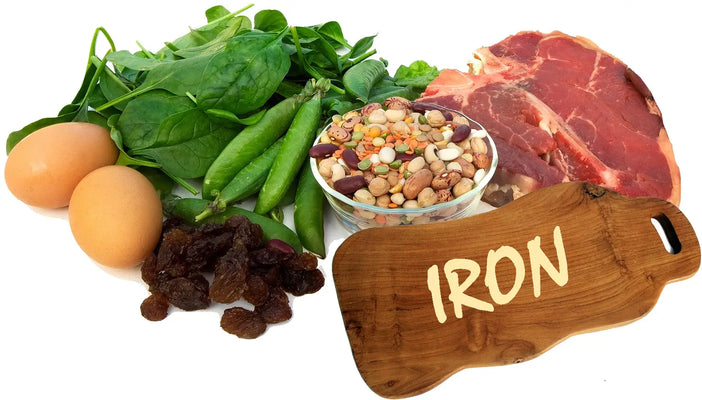Iron is gold for your body. Our school textbooks have already taught us the significant roles iron plays in maintaining our health. If it doesn’t ring a bell, then let’s have a quick recall. Our body needs iron to make hemoglobin which carries oxygen to all the organs. Many hormones and enzymes cannot function without iron.
Besides, it also boosts our immunity, improves cognitive function, and helps us have healthy and beautiful nails and hair. These were just a few from the list. Iron deficiency can lead to anemia, dizziness, and shortness of breath in addition to a huge array of other symptoms.
However, the question is, how does iron from food get into the body and be used for so many different functions? How does it get into our cells? We will get to these answers but stay with us while we give you a quick insight into the types of iron to help you understand absorption better.
Types Of Iron
Iron can be heme or non-heme. Heme iron is called so because of its association with a protein called heme and non-heme is called so obviously because it lacks it.

Heme Iron
Only animal foods like seafood, poultry, and meat can give you your dose of heme iron. None of the plant-based foods contain heme iron. If you are wondering whether dairy and eggs can help you with this, then no. Even they are non-heme. However, let us clear the air by revealing that animal foods have non-heme iron too.
But they win because of the heme portion. The reason behind glorifying heme iron so much is that it gets more readily absorbed than non-heme iron. To give you a clear picture, the absorption rate of heme iron is 15-35%. Besides, its availability and absorption efficiency are not affected by the other foods you consume along with it.
Non-heme Iron
Almost all plant-based foods including nuts, legumes, seeds, and green leafy vegetables like spinach serve as sources of non-heme iron. Almost everything that mom forces us to eat. However, the catch is, unlike heme iron, it does not get easily absorbed by our body. The absorption rate is just 2-20%. This is why vegetarians are more prone to anemia.
In addition, other foods you consume heavily influence its absorption efficiency and bioavailability. While substances like calcium, phytates, and tannins(from plants) can hinder absorption, vitamin C can significantly increase non-heme iron uptake. So vegetarians, relax. Adding vitamin C supplements to your diet can load your body with all the iron it needs to keep you fit as a fiddle. Enough of beating around the bush, now let’s jump right into the crux.
How Does The Body Absorb Iron?
Imagine you eat iron-rich food. What happens next? It travels all the way down through your food pipe into your small intestine. Most of the iron absorption occurs in a part of the small intestine called the duodenum. The cells which line the intestine and therefore obviously the duodenum are called enterocytes. These tiny cells help your body absorb and regulate the iron in your diet.
If you consume animal products then you take in the iron bound to the heme protein. On the other hand, iron in supplements like those from Chewwies is present in the form of iron salt. The thing to note is that your body can absorb iron either when it is bound to heme or when it is present as ferrous (Fe^2+).
Any iron in the form of ferric (Fe^3+) gets converted to ferrous by an enzyme present in the enterocytes to get ready to be absorbed. A special protein on the membrane of the enterocytes then sends the iron as ferrous into the cells, much like a vehicle carrying you from one place to another.
In the case of heme iron, it enters the cells through a different class of membrane transport proteins known as heme carrier protein. Once inside the cells, heme iron is broken down, processed, and ferrous is once again released.
After this, the iron in ferrous form has two possible fates. One, it either gets stored in the cells as ferritin which acts as the major reservoir of iron. Two, an enzyme converts ferrous back to ferric, a protein sends it out from the cells into the blood, and the ferric binds to transferrin and circulates throughout the body to reach the tissues. This is how iron does rounds of your body.

Conclusion
Needless to say, iron is vital for normal functioning and development. As we saw, if you are a meat eater then you don’t have many reasons to panic about suffering from iron deficiency. If you are a vegetarian or a vegan, then don’t panic too; because that’s definitely not going to help you stock up on iron. Instead, eat loads of foods rich in non-heme iron and make dietary supplements of vitamin C an inseparable part of your diet. That shall weed out your worries!


